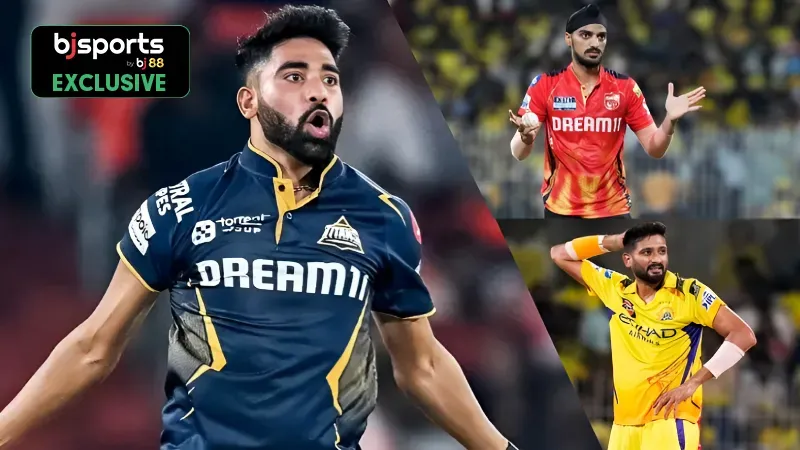The art of new bowling in the power plays requires an understanding of the game and pitch conditions. Dismissing the opponents’ team in the power plays has not just given the team an early edge but also demolished the opponents’ winning momentum and put pressure on them since the start of the game.
In the IPL 2025, many bowlers have stolen the show and showcased their ability to bowl well in the powerplays. Speaking about the same subject, given below are the top three players who took the maximum wickets in the IPL 2025 before the tournament was suspended amid tensions between India and Pakistan.
Read More: Top 3 players with the best strike rate before IPL 2025 suspension
Khaleel Ahmed (CSK)—9 wickets in 12 innings at 30.88 average, 8.96 economy

Khaleel Ahmed was one of the best pacers in the IPL 2025. The star seamer is only the bowler from the side who was consistently taking the wickets and posing a threat to the opponents’ team. However, he failed to get the support from the rest of his teammates as CSK became the first team to get knocked out of the tournament.
Mohammed Siraj (GT)—9 wickets in 11 innings at 27.66 average, 8.89 economy

GT’s new buy, Mohammed Siraj, showcased his beast form in the IPL 2025. The right-arm pacer was consistently picking up the wickets in the power plays and restricting the teams to a narrow score. The GT side holds the strong spot to seal the playoff spot as they are currently in the upper half of the points table. He will be aiming to continue his form in the next matches.
Arshdeep Singh (PBKS)—8 wickets in 10 innings at 17.50 average, 7.00 economy
The PBKS pacer has picked up eight wickets in the last 10 matches and kept his side in the dominant spot to seal the playoff spot. The left-arm pacer is one of the best bowlers in the current league and will be looking to continue his form when the IPL resumes.
Disclaimer: This Exclusive News is based on the author’s understanding, analysis, and instinct. As you review this information, consider the points mentioned and form your own conclusions.

